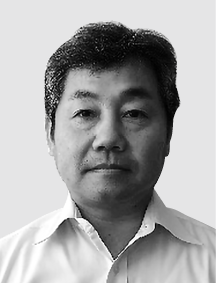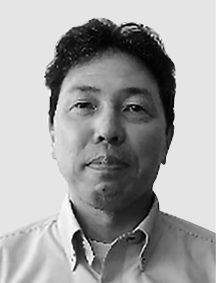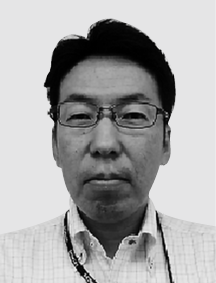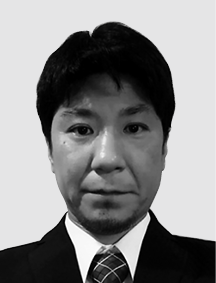Modularization of Cell Processing Facilities and COVID-19-ready Negative-pressure Clean Booth
Regenerative medicine using processed cells is becoming a promising treatment method for previously refractory diseases. Researchers throughout the world are working on practical implementations and gradually releasing their findings. Hitachi Global Life Solutions, Inc. has accumulated a portfolio of air quality technologies that enable high-precision control of air temperature, humidity, cleanliness, and room pressure. These technologies are being used to provide air conditioning solutions for cell processing facilities used for regenerative medicine. The solutions are generating environmental and economic value for clients by providing comprehensive facility-wide coordination covering indoor production equipment and remote monitoring of the cell processing equipment and air conditioners. Hitachi Global Life Solutions has also drawn on its air purification and room pressure control technologies to develop a negative-pressure clean booth for use by healthcare providers in combating COVID-19. A type for the global market was released in May 2020.




While substances such as low-molecular-weight compounds and cell secretions have always been used as drugs, recent advances are enabling actual cells from living donors to be processed to make them responsive to particular diseases. Regenerative medicine uses these cells to treat diseases. It is currently an area of widespread research, with practical implementations that look very promising.
Regenerative medicine and other products approved in Japan are currently being used for treatment by processing them into the desired cells or tissues, mainly by using components such as stem cells existing in the body. However, sources of stem cells and other raw materials used in regenerative medicine are currently in short supply. This shortage can be solved by induced pluripotent stem cells (iPS cells) and embryonic stem cells (ES cells), which are looking increasingly promising for clinical research. Another area of growing interest is chimeric antigen receptor (CAR) T-cell therapy, which has been approved in Japan. It involves extracting the patient’s own T-cells and using genetically modified versions of them for cancer treatment.
Cells for use in regenerative medicine are usually processed in facilities known as cell processing facilities (CPFs). A CPF consists of a set of sterile clean rooms that are formed by dividing the facility interior into a zone for each cell processing procedure, and keeping each zone at a high level of cleanliness that satisfies a preset standard. One advantage of CPFs is that air cleanliness levels and production processing room pressures are each classified and managed by grade (see Table 1).
Table 1 — Maximum Permitted Suspended Particle Count for each Production Area Grade
 The table above shows the cleanliness of each grade for areas producing sterile products.
The table above shows the cleanliness of each grade for areas producing sterile products.
The air conditioning solution divisions of Hitachi Global Life Solutions, Inc. (Hitachi GLS) have concentrated their efforts on an equipment area known as special air conditioning. This equipment uses air conditioning control technology to provide high-precision air quality control for the air found in facilities such as clean rooms for pharmaceutical research and manufacturing, rooms that combat biohazards to enable pathogen testing, and industrial clean rooms for manufacturing semiconductors.
Air quality control technologies and CPFs used for regenerative medicine require lower costs, rapid construction, and lower lifecycle costs. To meet these needs, Hitachi GLS has recently devised a method of modularizing CPFs as a way to solve the challenges they face. This article discusses these activities and presents a negative-pressure clean booth that Hitachi GLS has developed by applying its air quality control technologies. The booth is designed for use by healthcare providers as part of the efforts to combat the rampant worldwide COVID-19 virus (novel coronavirus).
As mentioned above, CPFs need to strictly control the quality (temperature, humidity, cleanliness, and room pressure) of the air in use during cell production processes. Air quality grade determines the configuration of CPF spaces such as primary and secondary gowning rooms, clean corridors, cell preparation rooms, and storage rooms. The Regenerative Medicine Innovation Center is a facility that opened in December 2018. Its design reflects the air quality grade of each space (see Figure 1).
The facility has a hand-washing station as its entrance, followed by controlled zones further inside. Users enter the cell preparation room with the highest accessible cleanliness grade by passing along a route that extends from a gowning room (primary gowning room) to a clean corridor in the light gray zone, and then to a gowning room (secondary gowning room) and airlock in the dark gray area. Cells are handled and processed using sterile handling equipment installed in the cell preparation room.
So the facility is composed of several rooms that lead to the cell preparation room used for the final work. The conventional equipment design has dampers that react rapidly with ducts installed in each room to remove pressure differences with other rooms. The dampers are controlled to maintain the room pressure.
However, small rooms with limited floor space (such as primary and secondary gowning rooms) each require ducts configured with two systems (air supply and exhaust). So more duct space is needed as the number of small rooms increases, which could sometimes make it impossible to install dampers in low-ceiling locations.
Increasingly complex duct-driven control in these small rooms significantly increases cost and lengthens construction time for regenerative medicine CPFs. To solve these equipment cost and construction time issues, the modular CPF replaces the conventional duct and damper construction with an in-ceiling non-duct construction method that uses fan filter units (FFUs) for individual control. This method has been used to develop a next-generation modular cell processing center (CPC) that can maintain each room’s pressure and cleanliness (see Figure 2).
Figure 3 — Modular CPC System Diagram
 This diagram illustrates the air flow of an air conditioning system in a CPF.
This diagram illustrates the air flow of an air conditioning system in a CPF.
CPF plans refer to the facility’s user requirements specification (URS) to design the primary and secondary gowning rooms, airlocks, preparation room, and other areas needed.
Depending on the type of cells handled, required room configurations can be created as preset patterns to some degree. So reductions in design and planning time have been achieved by modularizing the size of each room in the configuration that makes up the facility’s equipment (such as the primary and secondary gowning rooms, equipment storage rooms, cell preparation rooms, storage areas, and sterilization areas).
The module structure is composed of a single-chamber ceiling with rooms underneath it. Since the ceiling chamber is a single space, there is no pressure variation from location to location. The structure uses FFUs to adjust the pressure in each room positioned below the ceiling chamber so that the pressure difference between each room is the set value (see Figure 3).
FFU is the general term for a device containing a fan used to create a clean room, combined with a high-efficiency particulate air (HEPA) filter or other filter. FFUs used for modularization are installed in the ceilings of clean rooms with ultra-high cleanliness at semiconductor manufacturing plants. They are also used in equipment embedded in semiconductor manufacturing systems to supply very clean air. The main advantage of FFUs is the rotation control function of the fans used in the brushless direct current (BLDC) motors. This function provides a linear connection between the air flow speed and motor speed (see Figure 4).
This feature is used to control the air flow of the air supply FFU and exhaust FFU installed in the chamber, adjusting the room pressure and achieving the set air cleanliness without using dampers. One benefit of using FFUs is the significant reduction in duct space made possible by needing fewer air supply and exhaust ducts in each room.
Another benefit of FFUs is their minimum air flow of 60 m3/h, which enables control of large or small air flows. The ability to control the room pressure of even small rooms such as gowning rooms gives FFUs an advantage in permitting a greater degree of freedom in the design.
To determine whether FFU technology supports practical application in CPFs, Hitachi GLS tested the technology’s room pressure control, cleanliness distribution, and temperature/humidity distribution. No room pressure variation overshoot was found relative to dampers, and FFUs were found to have better room pressure control tracking than dampers.
Minimizing the use of ducts and using FFUs to adjust the pressure of each room (such as the primary and secondary gowning rooms and preparation room) provides the benefit of enabling CPF installation in a confined area by keeping duct space to a minimum. Each of the rooms that make up the clean rooms needed in a CPF can also be designed in advance and assembled on-site to enable faster construction and help reduce costs. This benefit could result in modularization being used in tenant buildings with limited installation space and construction time.
Clients looking into doing business overseas could also benefit from modularization by combining it with Japanese standardized procedures for areas such as production control or quality control. This approach could enable production and CPF installation overseas while maintaining a constant standard of quality.
Figure 5 — Photo and Plan View of Negative-pressure Clean Booth
 The negative-pressure clean booth developed by Hitachi GLS is shown here along with a schematic diagram of it in plan view. The booth is made of square aluminum bars and incombustible antistatic vinyl.
The negative-pressure clean booth developed by Hitachi GLS is shown here along with a schematic diagram of it in plan view. The booth is made of square aluminum bars and incombustible antistatic vinyl.
By applying its experience in working with air quality control technology, Hitachi GLS has developed a negative-pressure clean booth designed to enable emergency assistance for healthcare providers dealing with the rampant worldwide COVID-19 crisis (see Figure 5). The booth offers the following four benefits:
In addition to use in hospital rooms, the booth is also designed to support use in polymerase chain reaction (PCR) test labs and use for the triage of medical facility visitors presenting with fever.
Hitachi GLS is eager to see the negative-pressure clean booth enjoy widespread use among all those working to prevent COVID-19 transmission, and will look into releasing the intellectual property for this technology to the public free of charge as a way to give back to the community.
Air conditioning solutions for the regenerative medicine market are one category of solutions offered by Hitachi GLS in the equipment area known as special air conditioning. This article has presented two examples of these solutions by discussing the development of modularized CPFs, and how this technology was applied to a negative-pressure clean booth for healthcare providers dealing with COVID-19.
To release a portfolio of medical technology for regenerative medicine both within and outside Japan, Hitachi GLS will continue strengthening ties with collaborative creation partners as it grows its business through work on areas such as automation. The company plans to continue releasing information used to provide an ongoing series of solutions that will help give back to the community.
The negative-pressure clean booth described in this article was developed in collaboration with Rorze Lifescience, Inc. and Shanghai Rorze Remed Biotechnology Co., Ltd. The module development work was also assisted extensively by the members of Nikkei Panel System Co. Ltd., Cyfuse K.K., and other organizations. The authors would like to express their heartfelt appreciation.